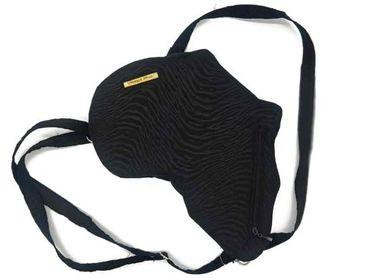African Clothing And its Evolution
African clothes typically refer to the typical apparel worn by the individuals of Africa.
There are several different dress styles, and the kind of towel plays an indispensable function in vogue the garment. The material frequently shows the society in general and the standing of people or teams within that neighborhood.
In some instances, typical bathrobes have been replaced or influenced by foreign societies, like colonial impact or western popular outfit code.
The evolution of wear Africa is extremely difficult to trace due to the lack of written word and actual historical evidence. Much is assembled from numerous resources like standard robes being passed on to existing day tribal members, word of mouth (oral history), cinema (masquerades), and art and artifacts that reveal sculptural representations of the dress.
BACKGROUND OF CLOTHING IN AFRICA
Bark fabric, hairs, skins, and hides were primarily used for these first garments.
Raffia was used to stitch separate pieces of bark towel and be utilized for grass skirts.
Barkcloth
Rock age guy forward made bark towel by peeling bark from trees and pounding it with a rock till slim and malleable. Little pieces would certainly be stitched with hiding or raffia to make larger items to cover the body.
Ugandan females, barkcloth wrappers, very early 20thC, Mombasa
In some cases, it was embellished with patterns giving rise to the tradition of design that exists in nearly every African nation.
Accessory of clothes stopped using making fashion jewelry and head equipment from seashells, bones, ostrich eggshell items, and feathers.
The earliest proof of fabric manufacture appeared at Igbo-Ukwu and dug deep into pieces of unpatterned, bast-fiber towel dating from the 9th Century. (Bast is the plant fiber made from the phloem, the internal bark). Discovery of the Tellem collapses Mali subjected 11th and 12th Century funerary sites, revealing fragments of cotton and wool material colored with indigo.
And after that, around the 15th Century, profession happened in Africa with delivery courses being opened up in-between Europe, Africa, and the East. You can choose to buy African Inspired Apparel Store Online because we sell Affordable Handmade African Traditional Accessories.
TRIBAL CLOTHING
Traditional and modern woven and printed material, wrapped or curtained around the body, creates the center of tribal clothes. Accessory of the body with headdresses, bags, belts, collars, bands and capes made from beads, feathers, leather, gold and silver, seashells, ostrich eggshell, ivory, switches, fur, skins, bone, animal tails and hair, raffia, timber, lawn, bells and pressed steel all to contribute to a rich and ornamented outfit made use of for tribal objectives.
Combined with the putting on of headbands, lockets, armbands, wristlets, armbands, anklets, fueled oil, aromatic skin, and clothed hair, grown-up females and males could be wonderfully worn down with the weight and volume of their dress.
Ashanti weaving has two degrees, cotton cloth for basic usage and cloths partially or completely constructed from silk for courtly application as the seen reverse. It is commonly called 'Kente' cloth. Sadly, Ashanti weaving is falling past its prime as the need for high criteria and complex pattern styles have decreased.
In some areas of Africa, regional individuals have handled the gown of their colonial inhabitants and produced something quite special.
The Herero women of Namibia have adjusted the Victorian outfit of their German settlers and adapted it into their own complete and amazing style total with cow-horn-shaped hats.
CONTEMPORARY AFRICAN CLOTHING
Today, African garments take their roots in standard dress and are put on by numerous people for ceremonial occasions and daily wear. It makes for a dynamic and vibrant scene wherever you enter Africa.
African dress might consist of a single item or a fully composed outfit and range from easy to complex.
Kaftans
Kaftans worn by ladies today in Africa were originally men's clothing. In modern times both men and women put on kaftans that can either be a straightforward one garment robe plus a hat or a three-piece set finished with a hat and a scarf to make an extremely outstanding outfit.
A Kanzu is a lengthy (generally white) kaftan with long sleeves worn by Swahili males.
Kaftans are prominent with both sexes in Central and Western Africa, where they are called boubous for men and m'boubous for females. A lady's m'boubou consists of a huge dress overruning in addition to a wrapper and adorned with an elaborate headscarf.
An Agbada is the Nigerian Yoruban version of a boubou. It is a long, loose-fitting, commonly stitched gown with vast sleeves and a hole in the center for the head to glide through. It is used specifically by Yoruba men. It was worn over a lengthy-sleeved tunic (buba) and long tie-up pants (Sokoto) and accompanied by a hat (chechia) that matches the attire.
All three products of clothes are usually the same color.
For More Info:- African Print Handbags for Sale

Comments
Post a Comment